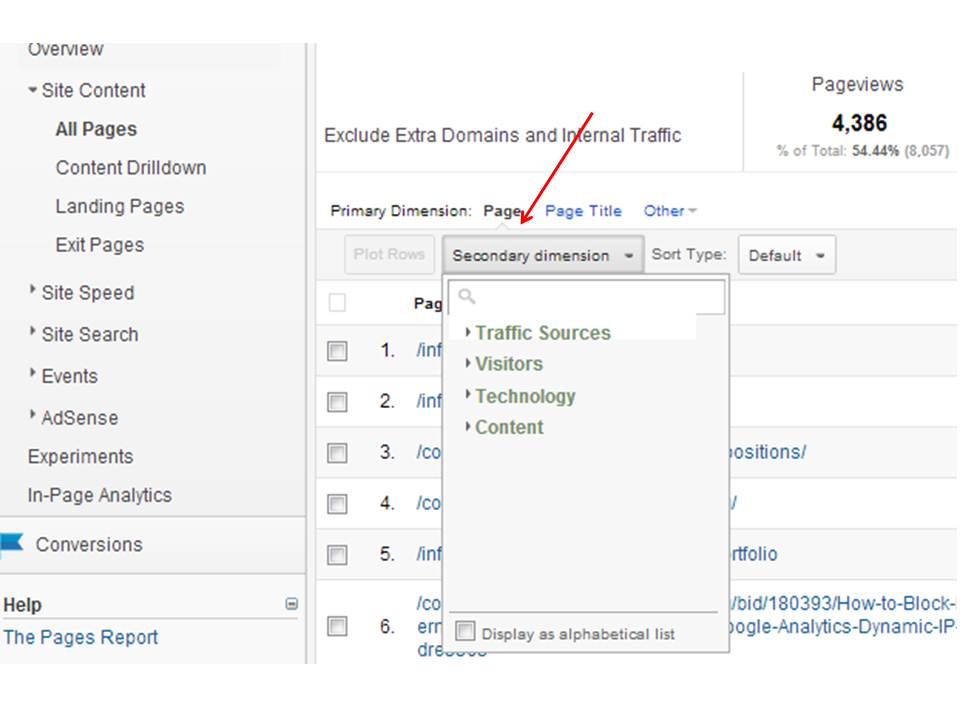Browsing the Midst of Additional Dimension in Google Analytics: A Comprehensive Expedition on Its Functionality
In the realm of electronic analytics, the intricacies of data analysis typically hold the key to unlocking useful insights. Within the expansive toolkit of Google Analytics exists an attribute that acts as a hidden treasure for those that seek a much deeper understanding of individual habits and web site performance. Secondary dimensions, though seemingly straightforward initially look, nurture a wide range of untapped possible waiting to be harnessed. As we start this journey to discover the nuanced functionality of additional measurements, we will uncover just how this feature can brighten patterns, introduce correlations, and eventually lead the way for notified decision-making in the digital landscape.
Understanding Additional Measurements in Google Analytics

Comprehending exactly how additional measurements job is crucial for leveraging the complete power of Google Analytics. These dimensions assist you address extra complex questions concerning customer actions and the performance of your web site content and advertising efforts. You can utilize second dimensions to assess which tools or web browsers are most typically used by visitors that make an acquisition, or to contrast the bounce prices of various web traffic resources. By incorporating main metrics with secondary dimensions, you can gain important understandings that drive educated decision-making and optimization approaches - what is a “secondary dimension” in google analytics?.
Leveraging Second Measurements for Data Analysis
Structure upon the fundamental understanding of how second measurements improve information analysis in Google Analytics, the usage of these additional layers of info ends up being paramount in removing beneficial understandings for notified decision-making and optimization approaches. By leveraging additional dimensions, analysts can dig deeper right into the performance metrics by including even more context to the key measurements, hence revealing covert patterns and relationships that may not appear at very first glance. This much deeper degree of evaluation allows services to much better recognize user behavior, identify trends, and determine areas for improvement.
In addition, second measurements provide a more comprehensive sight of the information, enabling division based upon numerous criteria such as demographics, devices, web traffic sources, and much more. This segmentation helps with an extra granular analysis, allowing companies to tailor their campaigns and methods to details target market sectors for enhanced targeting and customization. Essentially, the critical usage of additional measurements encourages companies to make data-driven decisions that drive growth and success in the electronic landscape.
Advanced Techniques for Second Dimension Execution
Discovering elaborate approaches to harness the full potential of second dimensions in Google Analytics boosts the deepness and class of data evaluation for tactical decision-making. One advanced technique for carrying out additional measurements is the use of personalized measurements. Additionally, incorporating secondary measurements with sophisticated sections can provide also more granular insights by applying multiple layers of segmentation to the data.
Interpreting Insights Via Additional Dimensions

When translating insights via additional dimensions, it is necessary to consider the context of the data and how various dimensions interact with each other. Understanding which details website traffic sources lead to greater conversion prices or identifying which devices users prefer for making purchases can offer workable insights for maximizing advertising projects and enhancing overall site efficiency. By thoroughly examining the data with additional dimensions in mind, services can make educated choices that drive significant outcomes and improve their digital visibility.
Optimizing Performance With Additional Dimensions

One vital Get the facts means to enhance efficiency with additional dimensions is by segmenting information extra granularly. This allows you to isolate details variables that might be affecting your metrics and obtain a far better understanding of what drives success or failure in your digital initiatives. For instance, by integrating secondary dimensions such as 'tool category' and 'touchdown web page,' you can go to my blog determine which tool types are most effective for certain touchdown pages, enabling you to tailor your techniques accordingly.
Additionally, using secondary measurements can assist you determine fads, patterns, and relationships that might not appear when analyzing information with primary dimensions alone. This much deeper level of analysis can bring about even more enlightened decision-making and eventually boost the general performance of your internet site or digital advertising and marketing campaigns.
Verdict
Finally, additional measurements in Google Analytics play a crucial duty in enhancing data evaluation and providing deeper insights right into website efficiency. By utilizing advanced strategies and analyzing the information effectively, services can optimize their techniques and enhance overall performance. Understanding the functionality of additional measurements is vital for making educated choices and driving success More hints in the electronic landscape.
By leveraging secondary dimensions, experts can delve much deeper right into the efficiency metrics by adding even more context to the key measurements, hence revealing hidden patterns and correlations that might not be obvious at very first glance. One sophisticated strategy for implementing additional dimensions is the usage of custom-made measurements.Having actually mastered advanced methods like custom-made measurements and regex for second dimension implementation in Google Analytics, the next essential action is interpreting the important understandings acquired through these innovative data division methods. Analyzing insights with second dimensions entails assessing the connections between the second and primary measurements picked, discovering patterns, trends, and relationships that might not be instantly noticeable when looking at the data in its totality.When interpreting understandings through additional measurements, it is necessary to take into consideration the context of the information and how various measurements connect with each other.